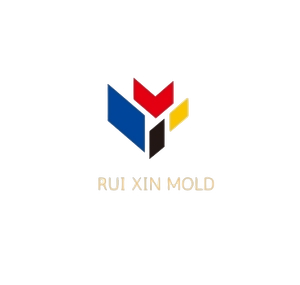Recent Posts
Tags
报错: 未找到这个表单
CNC Fixture Types: How To Choose The Right One for Workholding?

Introduction
CNC fixtures are essential components in the realm of precision manufacturing. These specialized tools hold and secure workpieces in place during CNC machining processes, ensuring accuracy, repeatability, and efficiency. With various types available, CNC fixtures cater to different machining operations, making them indispensable for industries ranging from aerospace to automotive. This blog delves into the types of CNC fixtures, their functions, and their significance in modern manufacturing.
Table of Contents
- 1.Definition
- 2.Historical Background and Evolution
- 3.Detailed Description of CNC Fixture Types
- 4.CNC Fixture Manufacturing Process
- 5.Materials Used in CNC Fixtures
- 6.Advantages of CNC Fixtures
- 7.Applications of CNC Fixtures
- 8.Current Trends in CNC Fixtures
- 9.Challenges in CNC Fixture Design and Use
- 10.Conclusion
Definition
CNC fixtures are mechanical devices designed to secure a workpiece during machining. By providing a stable and precise setup, these fixtures enhance machining accuracy and reduce setup time, leading to higher productivity. They are critical in achieving consistent quality in CNC machining processes.

Importance of CNC Fixtures
Precision: They help maintain the exact position and orientation of the workpiece, which is essential for high-quality machining. Efficiency: By securely holding the workpiece, fixtures reduce setup time and increase production speed. Safety: Properly designed fixtures minimize the risk of accidents by ensuring that the workpiece does not move unexpectedly during machining.
Historical Background and Evolution
The concept of fixtures dates back to the early days of manual machining, where jigs and clamps were commonly used. With the advent of CNC technology, fixtures have evolved into sophisticated tools tailored for automated precision. Innovations in materials, design, and customization have made modern CNC fixtures integral to advanced manufacturing systems.
Detailed Description of CNC Fixture Types
Modular Fixtures
Description: Composed of interchangeable components, modular fixtures allow for flexible configurations.
Applications: Ideal for prototype machining and small-batch production.
Dedicated Fixtures
Description: Custom-designed for specific workpieces or operations.
Applications: High-volume production where repeatability is critical.
Vacuum Fixtures
Description: Use vacuum suction to hold workpieces, especially flat materials.
Applications: Common in woodworking and sheet metal machining.
Hydraulic Fixtures
Description: Utilize hydraulic pressure for clamping, offering high precision and reliability.
Applications: Aerospace and automotive industries.
Magnetic Fixtures
Description: Employ magnetic force to secure ferrous materials.
Applications: Machining operations involving steel or iron components.
Pneumatic Fixtures
Description: Use compressed air for clamping, ensuring quick and efficient setups.
Applications: Assembly lines and automated machining setups.
Design: Creating detailed blueprints tailored to the workpiece and machining requirements.
Material Selection: Choosing appropriate materials for durability and precision.
Machining: Using CNC machining to fabricate fixture components.
Assembly: Assembling components into a functional fixture.
Testing: Ensuring the fixture meets performance standards.
Aluminum: Lightweight and corrosion-resistant.
Steel: Durable and suitable for high-stress applications.
Cast Iron: Excellent vibration damping properties.
Plastics: Used for lightweight or non-conductive requirements.
Enhanced precision and accuracy.
Reduced setup times and increased efficiency.
Improved repeatability in machining operations.
Adaptability to complex and diverse machining tasks.
Aerospace: High-precision components like turbine blades.
Automotive: Engine parts and chassis components.
Medical Devices: Surgical instruments and implants.
Electronics: Enclosures and heat sinks.
Customization Costs: High initial investment for dedicated fixtures.
Complex Geometries: Difficulty in securing irregularly shaped workpieces.
Material Compatibility: Ensuring fixtures can withstand machining stresses.
Maintenance: Regular upkeep to maintain accuracy and reliability.
Conclusion
CNC fixtures are pivotal to the success of modern manufacturing processes, offering precision, efficiency, and adaptability. Understanding the types and applications of CNC fixtures can help manufacturers optimize their operations and stay ahead in a competitive industry. As technology advances, CNC fixtures will continue to evolve, addressing new challenges and unlocking further potential in machining excellence.
